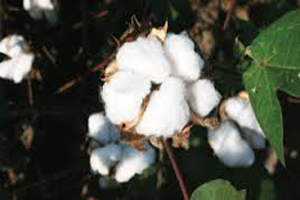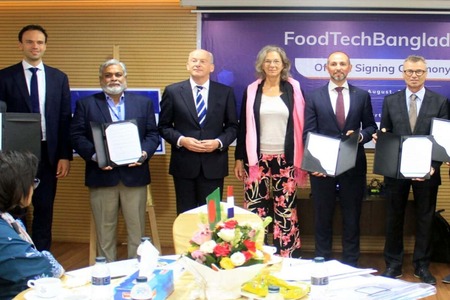
Florida cotton acreage increasing
YarnsandFibers News Bureau 2014-01-27 12:01:00 – FloridaShaw and Shaw Farms of Alachua usually grow corn, peanuts and soybeans; have planted about 1,500 acres of cotton in 2013, accounting for the majority of the 2,529 acres in Alachua County. That is up from 69 acres countywide in 2011 and 608 acres in 2012, according to the U.S. Department of Agriculture.
Co-owner Buckley Shaw said that the higher cotton prices, compared with a drop in peanut prices, made cotton more attractive in 2013 as they cut way down on peanut acreage to grow cotton for the first time in 10 years.
Cotton has made a bit of a comeback in this part of Florida as farmers take advantage of higher prices and better baling methods that make the cost of freight to the nearest cotton gins in south Georgia more feasible. But the comeback could be short-lived with prices trending downward
Cotton prices on the international market jumped from an average of 78 cents per pound in 2009 to $1.64 in 2010 and then dipped to $1 even in 2011, according to the Intercontinental Exchange.
According to Cotton marketing consultant Robert Antoshak, the run-up on prices was the result of a lower supply as farmers switched to other crops, particularly corn for ethanol, while bad weather in Asia and the Middle East hurt production and investor speculation drove up prices.
At the same time, demand was up for clothing as the world was coming out of a recession.
Shaw said that they can make money at about 90 cents a pound and break even at 80 cents. With prices down from earlier highs, it's close to where they won't be growing it (this) year.
Over the past 12 months, cotton futures have ranged from a high of 93 cents on Aug. 16 to a low of 76 cents on Nov. 20. Trading opened at 88 cents on Friday.
Shaw Farms still was baling some cotton this past week, which is late because of wet weather delays. The farms rented a new cotton combine that packs the cotton into much tighter and smaller bales, allowing them to fit more pounds of cotton on a flatbed trailer to ship to BCT Gin Co. in Quitman, Ga., just west of Valdosta.
The mill ginned about 2,000 bales from Florida in 2012 and expects to have ginned about 8,000 in 2013, manager Steve Bullard said.
Florida cotton acreage increased from about 105,000 in 2012 to nearly 130,000 in 2013, with most cotton farms in the Panhandle. Even with the increase, Florida's acreage was less than a tenth of Georgia's 1.37 million acres.
Bullard said that Georgia’s cotton acreage stays fairly consistent because it is needed as a rotation crop for peanuts to eliminate disease. Georgia's heavier soils tend to have more peanut disease, whereas Florida's sandy soils do not have the problem to the same degree, he said.
It's easier for producers to get away with planting peanuts year after year, he said of Florida farmers.
Jesse Strickland raised 1,100 acres of cotton on his Romeo farm in Marion County in 2013 and harvested another 1,000 acres for other Marion farmers, in addition to a farm in Fort White in Columbia County.
David Wright, extension specialist in Quincy, said that more farmers from Live Oak to Marion County are interested in cotton as a rotation crop with peanuts. Cotton is a lot more drought-tolerant than corn, does well in sandy soils and requires a lot less irrigation.
More than 90 percent of Florida's 2007 cotton crop was not irrigated, according to the USDA Census of Agriculture.
Wright said that he expects a lot more cotton farming in the area in the future as a result of water supply issues that could make irrigation more difficult.
Cotton was a major cash crop in Florida in the 1800s, and Alachua County produced the largest crop of long-staple cotton in the state during the Civil War. It gradually fell out of favor throughout the 1900s as a result of better markets for other crops, high labor costs and a boll weevil infestation.
Market Intelligence
Ask for free sample Report

experience
Customer Base
dedicated team
Countries Served Worldwide









